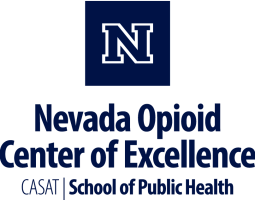
Perinatal health is crucial for ensuring the well-being of both mothers and their babies, particularly during pregnancy and the early stages of a child’s life. Addressing opioid use and implementing prevention strategies during this period is vital, as opioid exposure can lead to severe complications, including neonatal abstinence syndrome (NAS), preterm birth, and developmental issues. Access to comprehensive resources and support can help expectant mothers manage and prevent opioid use, promoting healthier outcomes for both mother and child. Below, you will find a list of essential resources to support perinatal health and opioid use prevention.
Perinatal Health Resources
Websites
Treatment of Opioid Use Disorder Before, During, and After Pregnancy
The CDC page outlines the importance of medication-assisted treatment (MAT) for opioid use disorder (OUD) during pregnancy, emphasizing methadone and buprenorphine as effective options to improve maternal and neonatal outcomes. It also highlights the need for comprehensive care, including mental health support, to reduce relapse risks and manage withdrawal symptoms in newborns.
Perinatal Substance Use Treatment Network
The webpage is a comprehensive resource for behavioral health services in Nevada, specifically focusing on treatment for substance use disorders among pregnant and postpartum individuals. It offers information about certified treatment facilities, a statewide hotline for crisis intervention, and details on the Comprehensive Addiction and Recovery Act (CARA) and its application in Nevada. The site also includes links to additional resources and support services, such as medical and social services, aimed at improving health outcomes for those affected by substance use.
Tools & Resources
Empowered (Roseman University College of Medicine)
Empowered supports pregnant and postpartum individuals in Southern & Northern Nevada (and Weber & Davis Counties in Utah) who use, or have used, opioids or stimulants. Their team provides peer recovery support, care management, and community navigation to help individuals prepare for birth and thrive as caregivers.
Northern Nevada HOPES – Perinatal Care Program
Northern Nevada HOPES offers a Perinatal Care Program for pregnant individuals with current or past opioid use. Services include prenatal and postpartum care, lactation and nutrition counseling, behavioral health support, peer counseling, and family planning. Safe treatment with buprenorphine (MOUD) is available to support healthy outcomes for both parent and baby. For more information, call 775-997-7583
Pregnancy and Substance Use: A Harm Reduction Toolkit
This resource is for pregnant and parenting people who use drugs, their loved ones, and their service providers. You can use this information to understand your rights, access services, and find high-quality, evidence-based care.
Reference Guide for Labor and Delivery Complicated By Substance Use
This reference guide aims to address some of these variances and provide a resource with best practices, guidelines, and protocols for medical professionals involved in the care of pregnant patients with OUD who are admitted to L&D units for delivery and their infants up until discharge.
Reference Guide for Reproductive Health Complicated by Substance Use
The intention for this guide is to provide basic directives for successfully implementing Screening, Brief Intervention and Referral to Treatment (SBIRT), into the clinical setting. SBIRT, specifically how to apply it to pregnant and non-pregnant persons of reproductive age populations.
Posters & Infographics
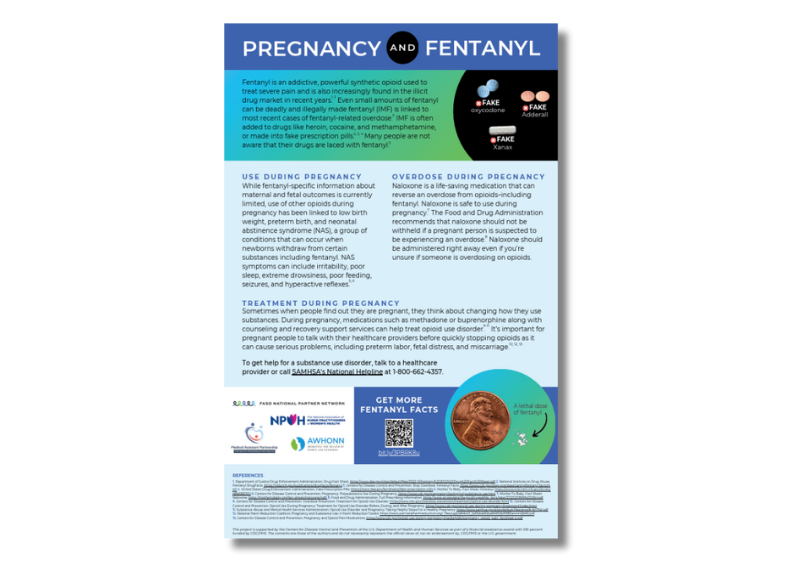
Pregnancy and Fentanyl Poster
This free downloadable poster from MAP at the University of Nevada, Reno, outlines the risks of fentanyl use during pregnancy, safe opioid treatment options, and potential impacts on newborns. Free hardcopies can be requested.
Access this Resource
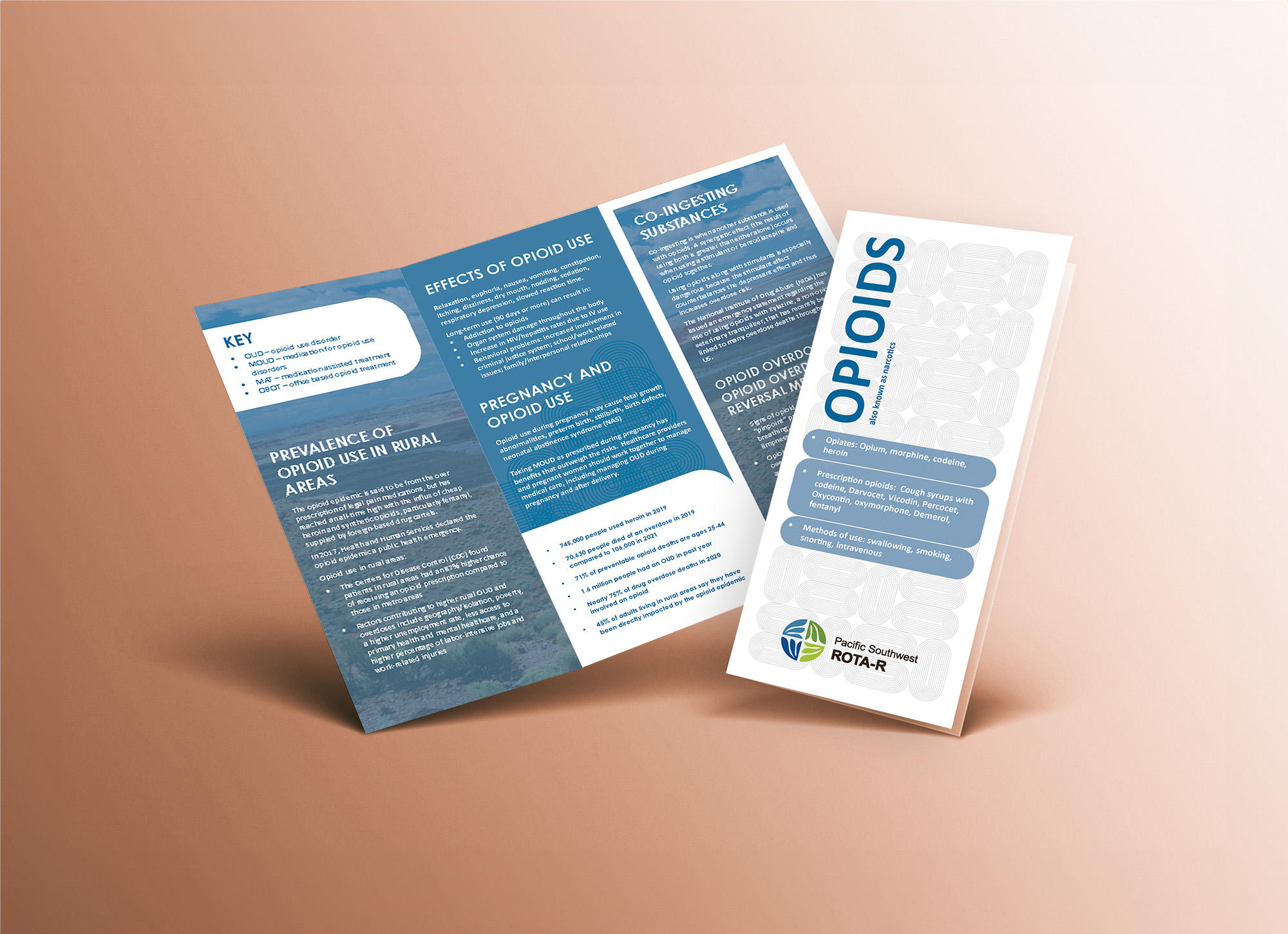
Opioid Trifold Brochures
Opioid Information Brochures for Providers or Consumers help educate on opioids and opioid use, including effects of opioid use, pregnancy and opioid use, medications for opioid use including opioid overdose reversal medications, and treatment options for persons using opioids.
Download or request free hard copies
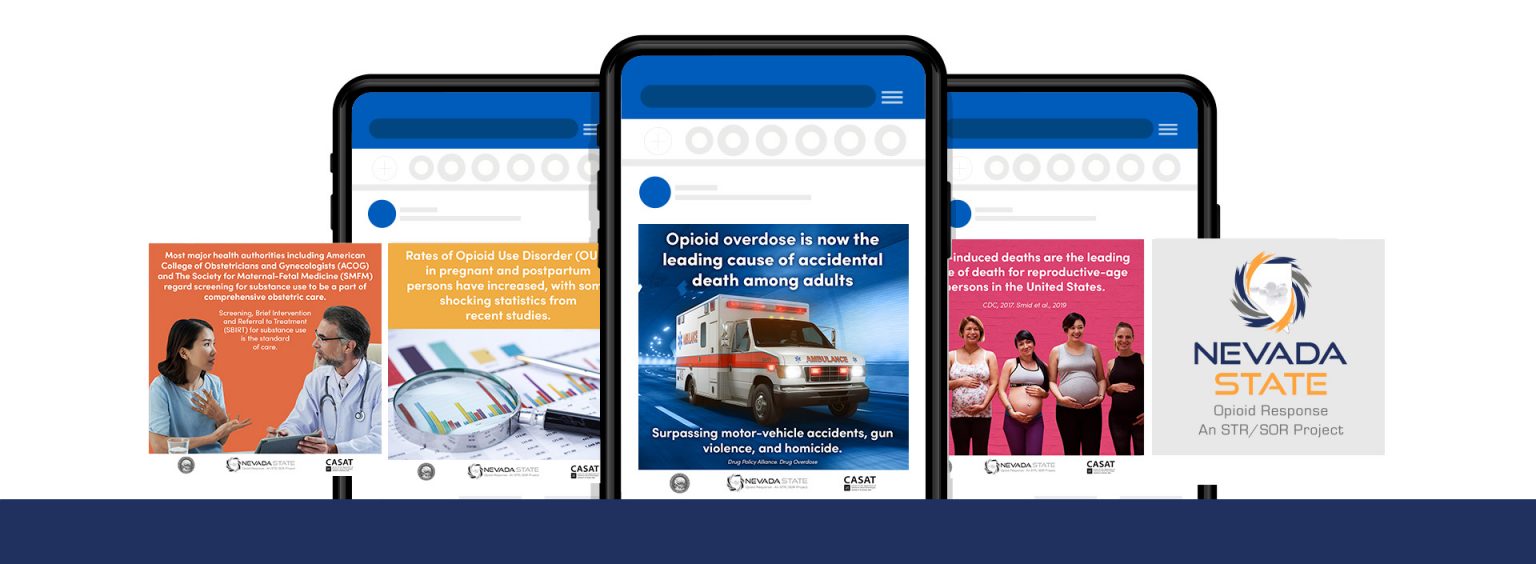
Perinatal Health Media Toolkit
This Perinatal Health Media Toolkit was developed to raise awareness of these resources and the use of Screening, Brief Intervention and Referral to Treatment (SBIRT). #PerinatalHealthSBIRT
View the Toolkit
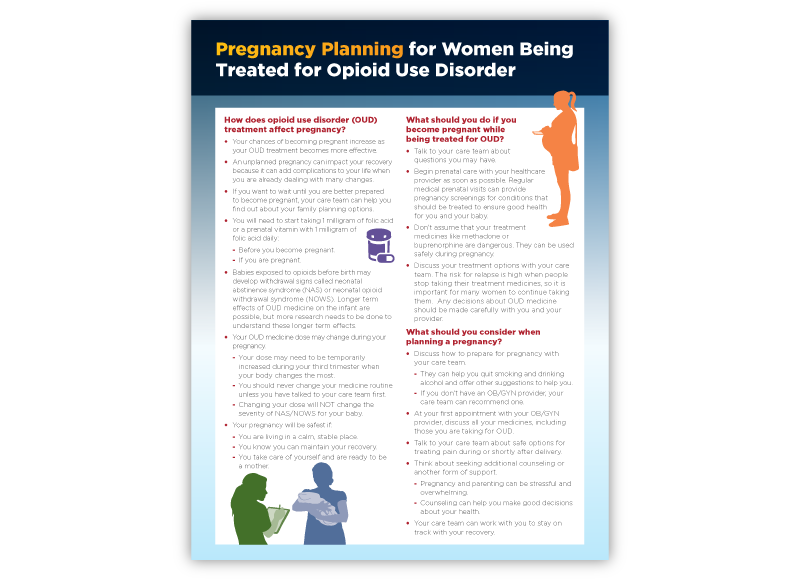
Pregnancy Planning for Women Treated for Opioid Use Disorder
This fact sheet is for women who are pregnant or of childbearing age with an opioid use disorder.
View the SAMHSA Fact Sheet
Publications
Evidence-Based, Whole-Person Care for Pregnant People Who Have Opioid Use Disorder
This Advisory outlines how healthcare providers (i.e., obstetrician-gynecologists [OB-GYNs], primary care physicians, and other professionals who treat pregnant people) can take an active role in supporting the health of pregnant individuals who have OUD and their babies.
Strengthening the System Supporting Perinatal People with Substance Use Disorder in the Midwest Using Group Model Building
Simon J, Guynn I, Thompson M, Hambright S, Jones C, Lich KH. Strengthening the System Supporting Perinatal People with Substance Use Disorder in the Midwest Using Group Model Building. Matern Child Health J. 2023 Dec;27(Suppl 1):128-142. doi: 10.1007/s10995-023-03751-z. Epub 2023 Jul 21. PMID: 37477728; PMCID: PMC10692270. https://www.ncbi.nlm.nih.gov/pmc/articles/PMC10692270/
Opioid Use and Opioid Use Disorder in Pregnancy: A Joint Opinion of the ACOG’s Committee on Obstetric Practice and ASAM
The Society of Maternal–Fetal Medicine endorses this document. This Committee Opinion was developed by the American College of Obstetricians and Gynecologists’ Committee on Obstetric Practice in collaboration with committee members Maria A. Mascola, MD, MPH; Ann E. Borders, MD, MSc, MPH; and the American Society of Addiction Medicine member Mishka Terplan, MD, MPH.
Webinars & Online Learning
Current News & Research
Pediatricians’ Attitudes Toward and Use of Terminology About Mothers With Opioid Use Disorder
The study investigates how pediatric primary care clinicians' language and attitudes may contribute to stigmatizing experiences for mothers with opioid use disorder (OUD), potentially hindering their engagement with healthcare services. By examining clinicians' terminology and perspectives, the research identifies areas for improvement to foster more supportive and non-stigmatizing interactions, thereby enhancing healthcare engagement among this population.
Medication for Opioid Use Disorder During Pregnancy — Maternal and Infant Network to Understand Outcomes Associated with Use of Medication for Opioid Use Disorder During Pregnancy (MAT-LINK), 2014–2021
The article analyzes data from the MAT-LINK project (2014–2021), which tracks maternal and infant outcomes associated with medications for opioid use disorder (MOUD) during pregnancy. It emphasizes that MOUD improves maternal health but highlights the need for tailored care to address neonatal outcomes, including opioid withdrawal.
Outcomes associated with the use of medications for opioid use disorder during pregnancy
The article examines the outcomes of using medications for opioid use disorder (MOUD) during pregnancy, focusing on methadone and buprenorphine. It highlights that while MOUD improves maternal outcomes and reduces risks of relapse, it may also be associated with neonatal opioid withdrawal syndrome, necessitating careful clinical management.
